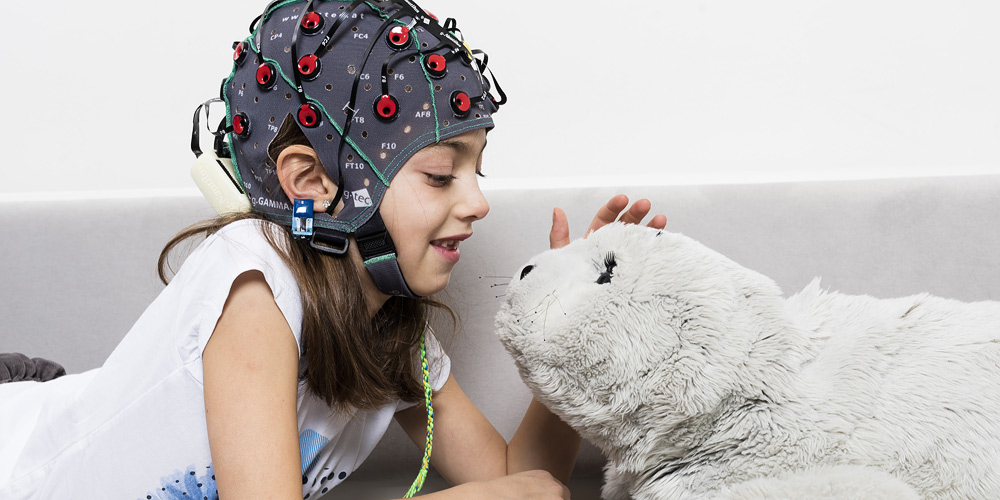
Credit: g.tec medical engineering GmbH
The Brain-Computer Interface Designers Hackathon
g.tec medical engineering GmbH (AT)
The BR41N.IO Hackathon brings together engineers, programmers, physicians, designers, artists and fashionistas to collaborate intensively as an interdisciplinary team. They plan and produce their own fully functional EEG-based brain-computer interface headpiece to control a drone, a Sphero or e-puck robot or an orthosis with motor imagery.
FRI Sept. 8, 2017
| 10:00 –10:30 AM | Welcome of BR41N.IO Hackers and Introduction |
| 10:30 AM – 11 AM |
Intro: Current and Future Applications of Brain-Computer Interface |
| 11 AM – 11:30 AM |
Intro: Agent Unicorn – A Fashionable BrainTech, Anouk Wipprecht (NL) |
| 11:30 AM – 12 noon | Intro: Steps to run a BCI, Christoph Guger (AT) |
| 12 noon – 12:30 PM |
Hackathon Gruppen und Mentoring |
| 1 PM |
START HACKING |
SAT Sept. 9, 2017
| 11 AM |
End 24-h-Hacking |
| 11 AM – 2 PM |
Hackathon project presentations |
| 2 PM – 2:30 PM |
Evaluation of projects by the Hackathon jury |
| 3 PM – 4 PM |
BR41N.IO Hackathon Ceremony to award the best projects by Christoph Guger & Landeshauptmann-Stv. Michael Strugl |
Whenever they think of a right-arm movement, their device performs a defined action. The programmers create an interface which allows them to control robots and other devices with their thoughts alone. The artists among the hackers make artistic paintings or post and tweet a status update. And hackers who are enthusiasts in tailoring or 3D printing give their BCI headpiece an artistic and unique design. And finally, kids create their very own ideas of an interactive head accessory inspired by animals, mythical creatures or their fantasy.
Inspired by the unique Agent Unicorn headpiece from fashion-technology artist Anouk Wipprecht, the BR41N.IO Brain-Computer Interface Designers Hackathon challenges young geeks to design and build a unique, playful and wearable brain-computer interface (BCI) headpiece. The BCI measures brain activity and enable users to control a robot or smart device, to communicate or paint using just their thoughts.
Twenty years ago, brain-computer interfaces could only move computer cursors. Today, machine learning is one component of BCIs that will be used in many different fields of neuroscience, such as motor rehabilitation of stroke patients, assessment of and communication with coma patients, control of devices for disabled people, cognitive training or neuromarketing. BR41N.IO shows these current and future developments and the unlimited possibilities of brain-computer interfaces in creative or scientific fields, and how artificial intelligence, life science, art and technology become a unity to evolve innovative and exceptional BCI headpieces.
Credits
BR41N.IO is organized by g.tec medical engineering GmbH | Schiedlberg | Austria

